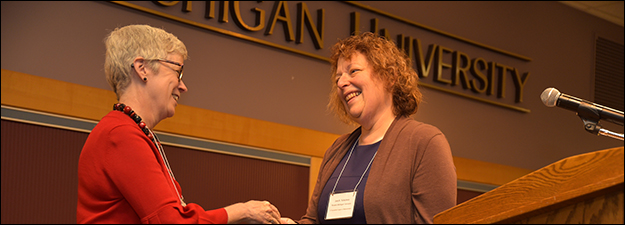The Virgin as Bridge: Cultural Exchange and Connection through Images of the Virgin Mary
Sponsoring Organization(s)
Special Session
Organizer Name
Diliana Angelova, Amanda Luyster
Organizer Affiliation
Univ. of California-Berkeley, College of the Holy Cross
Presider Name
Amanda Luyster
Paper Title 1
The Virgin: Bridging Flesh, Matter, and Spirit
Presenter 1 Name
Diliana Angelova
Paper Title 2
The Earliest Icons of the Virgin in Rome: East or West?
Presenter 2 Name
Maria Lidova (Congress Travel Award Winner)
Presenter 2 Affiliation
British Museum
Paper Title 3
Saint Bridget's Vision of the Nativity: Cultural Exchange through Mental Images of the Virgin Mary
Presenter 3 Name
Fabian Wolf (Karrer Travel Award Winner)
Presenter 3 Affiliation
Städel Museum
Paper Title 4
"En la forma y suerte que esta en su sanctuario": Hybridity, Materiality, and Nuestra Señora de Guadeloupe in Extremadura
Presenter 4 Name
Nicole Corrigan
Presenter 4 Affiliation
Emory Univ.
Start Date
11-5-2017 7:30 PM
Session Location
Fetzer 2040
Description
Across the medieval Mediterranean and beyond, people of many faiths and backgrounds sought the succor of the miraculous virgin and mother, Mary. Christians venerated Mary as the holiest figure of Christianity after Christ, the one thanks to whom the divine mystery of the Incarnation was fulfilled. The Koran also hailed her as chosen by Allah. Converts to Christianity from paganism or Islam were often said to be motivated by their great love of the Virgin. Byzantine churches were incomplete without her image in the holiest of holies, the apse of the sanctuary. In the West, the grandest Gothic cathedrals rose in her honor. Objects such as the thirteenth-century Freer canteen, as well as shared shrines, suggest that Marian images could be appreciated by audiences professing different faiths. Images of the Virgin acted as a shared touchpoint between people of many different backgrounds, socio-economic strata, and faiths.
This panel includes papers that focus on the capacity of the Virgin to act as a bridge or cultural mediator: between regions, between genders, between political factions and cities, and between belief systems. Panel participants may focus on representations of the Virgin as well as references to religious practices associated with images of the Virgin. Icons, cult centers, manuscripts, monumental sculpture, wall-painting, architecture, as well as practices associated with all of these, may be considered.
Amanda R. Luyster
The Virgin as Bridge: Cultural Exchange and Connection through Images of the Virgin Mary
Fetzer 2040
Across the medieval Mediterranean and beyond, people of many faiths and backgrounds sought the succor of the miraculous virgin and mother, Mary. Christians venerated Mary as the holiest figure of Christianity after Christ, the one thanks to whom the divine mystery of the Incarnation was fulfilled. The Koran also hailed her as chosen by Allah. Converts to Christianity from paganism or Islam were often said to be motivated by their great love of the Virgin. Byzantine churches were incomplete without her image in the holiest of holies, the apse of the sanctuary. In the West, the grandest Gothic cathedrals rose in her honor. Objects such as the thirteenth-century Freer canteen, as well as shared shrines, suggest that Marian images could be appreciated by audiences professing different faiths. Images of the Virgin acted as a shared touchpoint between people of many different backgrounds, socio-economic strata, and faiths.
This panel includes papers that focus on the capacity of the Virgin to act as a bridge or cultural mediator: between regions, between genders, between political factions and cities, and between belief systems. Panel participants may focus on representations of the Virgin as well as references to religious practices associated with images of the Virgin. Icons, cult centers, manuscripts, monumental sculpture, wall-painting, architecture, as well as practices associated with all of these, may be considered.
Amanda R. Luyster


